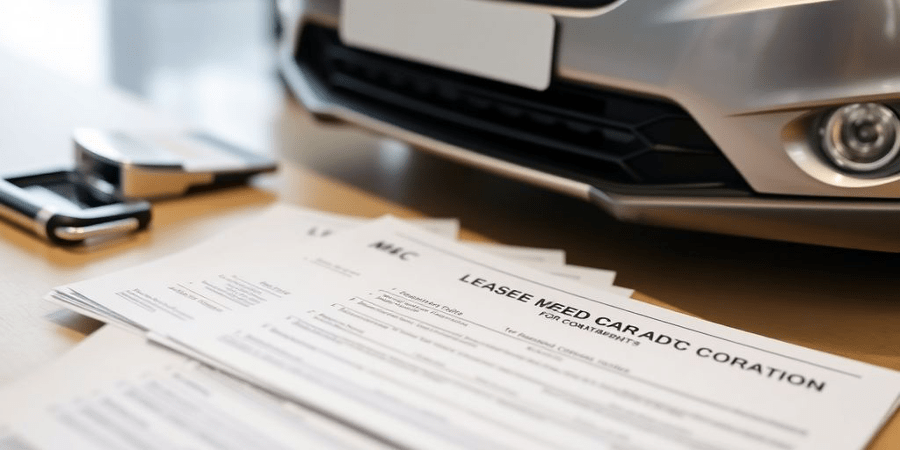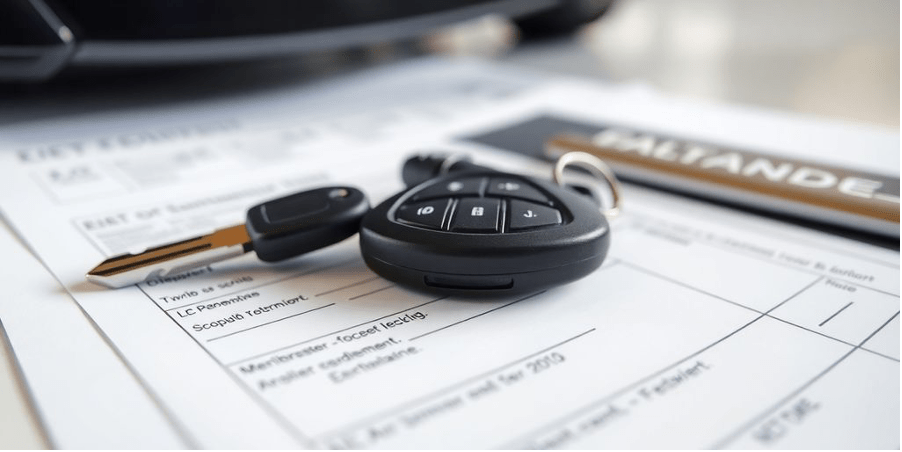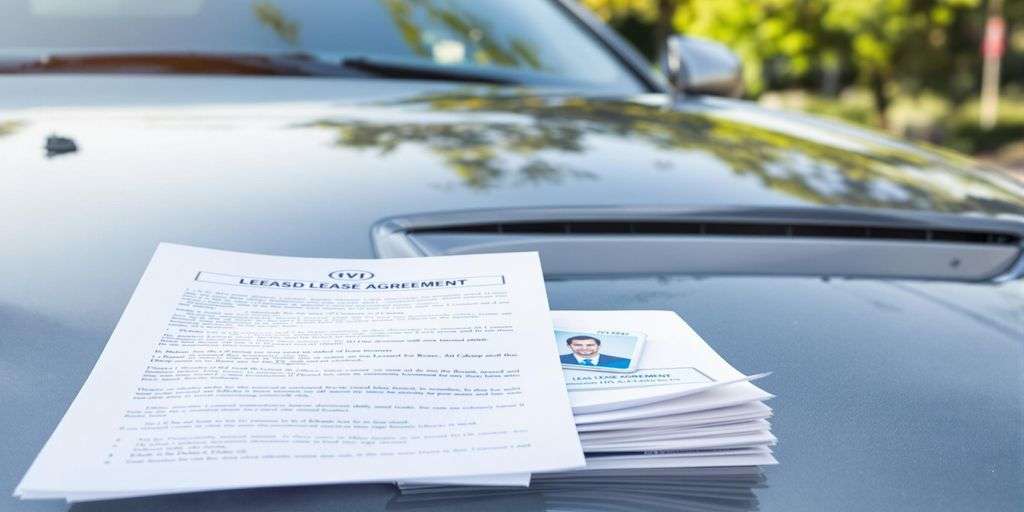Key Takeaways
- Scrapping a leased car requires specific documents like the lease agreement and proof of ownership.
- You'll need authorization from your leasing company before proceeding with the scrapping process.
- Different states have different rules, so check local regulations to ensure compliance.
- Insurance plays a role, especially if you're dealing with a totaled vehicle.
- Avoid common mistakes like ignoring lease terms and failing to notify the leasing company.
Understanding the Basics of Scrapping a Leased Car

What Is a Leased Car?
A leased car is essentially a rental, but with a longer term and more commitment. You don't own it; instead, you pay to use it for a set period, usually two to four years. At the end of the lease, you either return the car, buy it, or lease another. Leases often come with mileage limits and require you to keep the car in good shape. This makes it different from owning, where you can drive as much as you like and modify the car.
Why Would You Scrap a Leased Car?
Scrapping a leased car isn't common, but it can happen. Maybe the car's been in a major accident and is totaled, or perhaps it's reached the end of its useful life. Sometimes, the cost of repairs outweighs the car's value, making scrapping the only viable option. In such cases, you might need to scrap it to avoid further financial loss. Remember, this decision isn't solely yours; the leasing company has a say too.
Legal Implications of Scrapping a Leased Car
Scrapping a leased car involves more than just taking it to the junkyard. There are legal hoops to jump through. First, you need permission from the leasing company, as they technically own the car. Without their approval, you could face penalties or legal issues. It's also crucial to handle any remaining lease payments or fees. Ignoring these can lead to serious consequences, like damage to your credit score. Always check the lease agreement for specific terms related to scrapping.
Essential Documents Needed to Scrap a Leased Car
Scrapping a leased car isn't as straightforward as it sounds. You can't just hand over the keys and walk away. There are several critical documents you'll need to gather first. Let's break it down.
Lease Agreement Details
First off, dig out your lease agreement. This document is your go-to for understanding what you can and can't do with the car. The lease agreement will outline your responsibilities and any penalties for scrapping the vehicle. Check for any clauses related to early termination or scrapping, as these will guide your next steps.
Proof of Ownership and Title
Even though you're leasing, you'll need proof of ownership. This might sound a bit weird, but it's necessary. Typically, the leasing company holds the title, but you should have a copy of the lease agreement that proves your right to use the car. You might need to coordinate with the leasing company to get a temporary title or a statement of ownership for scrapping purposes.
Authorization from Leasing Company
Lastly, you need the green light from the leasing company. Without their authorization, you can't legally scrap the car. Reach out to them early in the process to understand their requirements. They might ask for certain documents, like a statement of intent to scrap or a formal request form. Once you've got their approval, you're all set to move forward with scrapping your leased vehicle.
Remember, scrapping a leased car is a legal process that requires careful attention to documentation. Missing even a single document can lead to complications, so it's crucial to be thorough and organized.
Navigating the Legal Requirements for Scrapping a Leased Car

State-Specific Regulations
When it comes to scrapping a leased car, understanding state-specific regulations is key. Every state has its own rules about scrapping vehicles, and they can vary widely. Some states might require extensive paperwork, while others have a more streamlined process. It's crucial to check with your state's Department of Motor Vehicles (DMV) to ensure compliance with all local laws. This could involve understanding the requirements for salvage titles or any necessary inspections before the car is scrapped.
Environmental Compliance
Scrapping a car isn't just about getting rid of it; there are environmental considerations to keep in mind. Many states have regulations to ensure that scrapped cars don't harm the environment. This includes proper disposal of hazardous materials like oil, coolant, and batteries. Make sure the scrap yard you're dealing with adheres to these environmental standards.
Handling Outstanding Payments
Before you can scrap a leased car, you need to handle any outstanding payments. Typically, this involves settling any remaining lease payments with the leasing company. If the car is totaled, your insurance might cover some of these costs, but it's important to communicate with both the leasing company and your insurer to understand your financial obligations. You should also confirm whether you need a rebuilt title if repairs have been made before scrapping the car.
Always stay informed about your state's regulations and ensure all legal and financial matters are settled before proceeding with scrapping a leased vehicle. This will save you from unexpected legal issues down the road.
The Role of Insurance in Scrapping a Leased Car
Understanding Your Insurance Policy
When it comes to scrapping a leased car, knowing the ins and outs of your insurance policy is essential. You'll want to review your coverage to see what's included regarding total loss situations. Many policies cover the actual cash value (ACV) of the car, which is the market value before the incident, minus any deductible. If your leased car is declared a total loss, the insurer typically pays the leasing company first. If the payout is less than what you owe, gap insurance can come in handy to cover the difference.
Filing an Insurance Claim
Filing a claim is a critical step if your leased car is damaged beyond repair. Here's a quick rundown of what to do:
- Assess the Damage: First, get an estimate of the damage from a reliable source.
- Contact Your Insurer: Inform them about the situation as soon as possible.
- Provide Documentation: Be ready with photos, repair estimates, and any other relevant documents.
- Negotiate if Necessary: If you think the insurer's valuation is off, don't hesitate to negotiate.
- Finalize the Claim: Once you agree on a settlement, complete the necessary paperwork.
Impact on Future Insurance Rates
Scrapping a leased car can affect your future insurance rates, especially if the car was totaled due to an accident. Insurers might view you as a higher risk, potentially increasing your premiums. It's a good idea to shop around and compare rates from different insurers to find the best deal. Additionally, maintaining a clean driving record and bundling policies can help lower your rates.
Keep in mind that the decision to scrap a leased car involves weighing the costs and benefits, including how it might affect your insurance situation. Carefully review your policy and consider consulting with your insurance agent to fully understand your options.
Steps to Take Before Scrapping a Leased Car
Assessing the Car's Condition
Before you even think about scrapping that leased car, take a good look at its condition. Is it really beyond repair, or just in need of some TLC? You might find that a few repairs here and there could make it roadworthy again. Start with a checklist:
- Inspect for major damages like frame issues or engine failure.
- Check if minor repairs could increase its value or usability.
- Consider getting a professional assessment for a detailed condition report.
Consulting with the Leasing Company
Your leasing company should be your first call when you're considering scrapping the car. They have a say in what happens next, and ignoring them could lead to penalties. Here's what to do:
- Contact the leasing company to discuss your options.
- Understand any financial obligations or penalties involved.
- Get written permission if they agree to let you scrap the car.
Exploring Alternative Options
Scrapping isn't the only route. Before you make that final decision, consider some alternatives that might be more beneficial:
- Transferring the lease: Find someone who might want to take over the lease.
- Selling the car: If the car is in decent shape, selling it might cover the lease payoff.
- Donating the car to charity: This could give you a tax benefit and help a good cause.
Sometimes, scrapping a leased car seems like the easiest option, but exploring all avenues can save money and reduce hassle in the long run.
Common Mistakes to Avoid When Scrapping a Leased Car
Ignoring Lease Terms
When scrapping a leased car, the biggest mistake you can make is ignoring the lease terms. Many people assume they can treat a leased car like a purchased one, but that's not the case. Lease agreements often have specific clauses about what you can and cannot do with the vehicle. Overlooking these can result in hefty penalties or legal issues. It's crucial to review your lease agreement thoroughly to understand your obligations and any potential fees associated with scrapping the car.
Overlooking Required Documentation
Failing to gather the necessary documents is another common pitfall. To scrap a leased car, you'll typically need:
- A copy of the lease agreement
- Proof of ownership or title
- Authorization from the leasing company
Without these, you might find yourself stuck in bureaucratic limbo, unable to proceed with the scrapping process. Always double-check with your leasing company to ensure you have all the required paperwork.
Failing to Notify the Leasing Company
Lastly, not notifying the leasing company can complicate the process significantly. The leasing company has a financial interest in the car, and they need to be informed about any plans to scrap it. This communication is not just a courtesy; it's often a legal requirement.
“Keeping the leasing company in the loop can help avoid misunderstandings and ensure a smooth transition.”
By being proactive and transparent, you can prevent unnecessary complications and ensure that the scrapping process goes as smoothly as possible.
Exploring Alternatives to Scrapping a Leased Car
When it's time to part ways with a leased car, scrapping isn't the only option on the table. Let's dive into some alternatives that might make more sense for your situation.
Transferring the Lease
One option is to transfer the lease to someone else. This can be a win-win, especially if you're looking to get out of the lease early. Lease transfers allow another party to take over the remaining payments and responsibilities. It's a straightforward process, but keep in mind, not all leasing companies permit this, so check your lease agreement and consult with your leasing company.
Selling the Car
Selling a leased car might sound tricky, but it's possible. First, you need to find out the car's payoff amount from the leasing company. If the market value of the car is higher than the payoff amount, you could sell it to a dealer or private buyer and pay off the lease. This approach can help you avoid additional fees and might even put some cash in your pocket.
Donating the Car to Charity
If neither transferring nor selling seems appealing, consider donating the car to charity. Many organizations accept vehicles, and they often handle the paperwork for you. Plus, this route might offer a tax deduction, though it's a good idea to consult a tax professional to understand the benefits. Donating is a great way to support a cause you care about while responsibly parting with your leased vehicle.
Before making a decision, weigh these alternatives carefully. Each option has its own set of pros and cons, so consider what aligns best with your personal and financial situation. It's always wise to discuss with your leasing company to understand any implications or fees involved.
Wrapping It Up: Your Guide to Scrapping a Leased Car
So, there you have it. Scrapping a leased car isn't just about waving goodbye to your old ride. It's a bit of a process, but knowing what documents you need can make it a whole lot smoother. From getting your hands on the lease agreement to making sure you have the right paperwork from the DMV, each step is crucial. Remember, it's all about having your ducks in a row. Once you've got everything sorted, you can move on to the next chapter, whether that's a new car or just a little less clutter in your life. Hopefully, this guide has shed some light on what you need to do. Good luck, and happy scrapping!
Frequently Asked Questions
What is a leased car and how is it different from owning one?
A leased car is one you rent from a dealership for a certain period, usually a few years. Unlike owning, you don't own the car at the end of the lease and must return it unless you choose to buy it.
Why might someone want to scrap a leased car?
Someone might scrap a leased car if it's badly damaged, too costly to repair, or if it's at the end of its life and can't be driven safely anymore.
Can I scrap a leased car without telling the leasing company?
No, you must notify the leasing company if you want to scrap a leased car. They own the vehicle, so you need their permission to scrap it.
What documents do I need to scrap a leased car?
You need the lease agreement, proof of ownership, and authorization from the leasing company to scrap a leased car.
Are there any costs involved in scrapping a leased car?
Yes, there might be costs, like paying off any remaining lease balance or fees for breaking the lease early. Check with your leasing company for details.
What happens if I ignore the lease terms when scrapping a car?
Ignoring lease terms can lead to penalties, extra fees, or legal trouble since the leasing company owns the car and has set rules you must follow.



